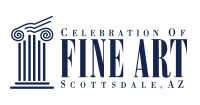Curt Mattson is equal parts artist, storyteller and historian of North American cowboy culture. He’s passionate about passing along the rich stories of the buckaroo, and uses sculpture, oil, watercolor and drypoint as his vehicles to bring others into the world of the horsemen and horsewomen of the West.
Each medium affords Curt a different way of communicating––the tangible form of sculpture engages multiple senses while the color and luminosity of watercolor and oil can draw the eye to specific details. And no matter the medium, whether on paper, canvas or bronze, the golden threads throughout each of Curt’s pieces are attention to detail and accuracy.
Because he’s aiming to leave a record of the buckaroo, Curt sees it as his responsibility to ensure each piece is accurate––from the bits on the horses to the hat on the cowboy or cowgirl depicted. And while he gained some of this deep knowledge through ongoing extensive research, he also grew up immersed in the world.
Until he discovered cowboy art, Curt was a rancher in Northern California and hadn’t entertained another possible career path. But the idea of using sculpture to preserve these stories kept tugging at him. After a couple years, he decided to heed that urge. That decision kickstarted a pursuit to achieve mastery in the art world––an endeavor he sees as ongoing.
Read on or watch the video below to learn more about Curt, how he became an artist and the intriguing stories behind some of his pieces.
When did you know art was your calling?
It was 1979, and we were showing horses at the World Championships in Oklahoma City. I walked into the Cowboy Hall of Fame and I saw “End of the Trail”, an 18-foot-tall piece by James Earle Fraser, and then I saw a drawing by Edward Borein and I thought, “What if I could try that?”. So four years later, I was managing a ranch in Northern California, and it came to the point where it was either try this or stay in the horse business.
I could tell the stories of the West in so many different ways and it was really appealing. I felt like the Lord just opened doors for me to be able to do that––to learn from really great artists. That’s what happened with me. One door after another. The hand of the Lord was just on that to be able to get where I could really go with excellence and tell the stories with excellence.
How did you develop your skill as an artist?
With sculpture, what I did was for four years, when I came off that ranch, a guy that I had known by reputation in the horse business had become one of the best-known sculptors in the country. He was about an hour or two hours away from my house. I went to an art show [where he was] and followed him around for an hour until I finally got up enough guts to ask him if he could look at a little clay I’d been messing with. He said, “Yes, bring it on down.”. It took me a month to call him because I was so terrified. When I took it down there, he looked at it and he said, “Well, let’s start over.”. So, we tore it up and started it all over again.
He taught me right from the ground up. And there were about six of us painters and sculptors who got together once a month for four years, that’s how I learned. Then I would try to do one workshop a year, which I did with painting and sculpture both. I still try to do workshops even now because I want to be growing all the time.
What do you love most about creating art?
It’s about the stories. Not everybody has had the opportunity to live this life. And I have, it’s my whole life. People love the West, but they don’t have the opportunity to be horseback. They don’t know what it’s like to be out in the middle of nowhere pushing a bunch of cows or to be on an old Bronte colt. You can take people into that world and my goal is to show them the real thing. There’s a lot of fictionalized, or especially nowadays, there are a lot of guys in Western art, but they have no idea what cowboy is about. They have no idea what the lifestyle is about.
Those two things need to come together so that people can be drawn in to see the real story. That’s what is important to me. It’s the real stuff. These people’s lives are so much more interesting than something you can make up. Most of the people I talk to that don’t even have an idea about that. I want to take them there because it’s such a wonderful culture. It excites me to no end to tell those stories and they don’t get told a lot. So that’s what I try to do.
What brings you back to the Celebration of Fine Art?
I’ve been here 22 years, and the relationships you build with your clients and with other artists, your clients become friends. Over that many years, we’ve seen people go through all kinds of challenges. We’ve been able to pray with them, we come alongside them and get to know them and their families, and multiple generations have come in. That is something I didn’t expect when we started.
There’s no other show where you can develop the kind of closeness that you have here with not only your collectors, but with all the other artists you get to be around. It’s a really uplifting kind of environment. I could just go on and on. There are so many wonderful things about being here. I enjoy the relationships more than ever.

